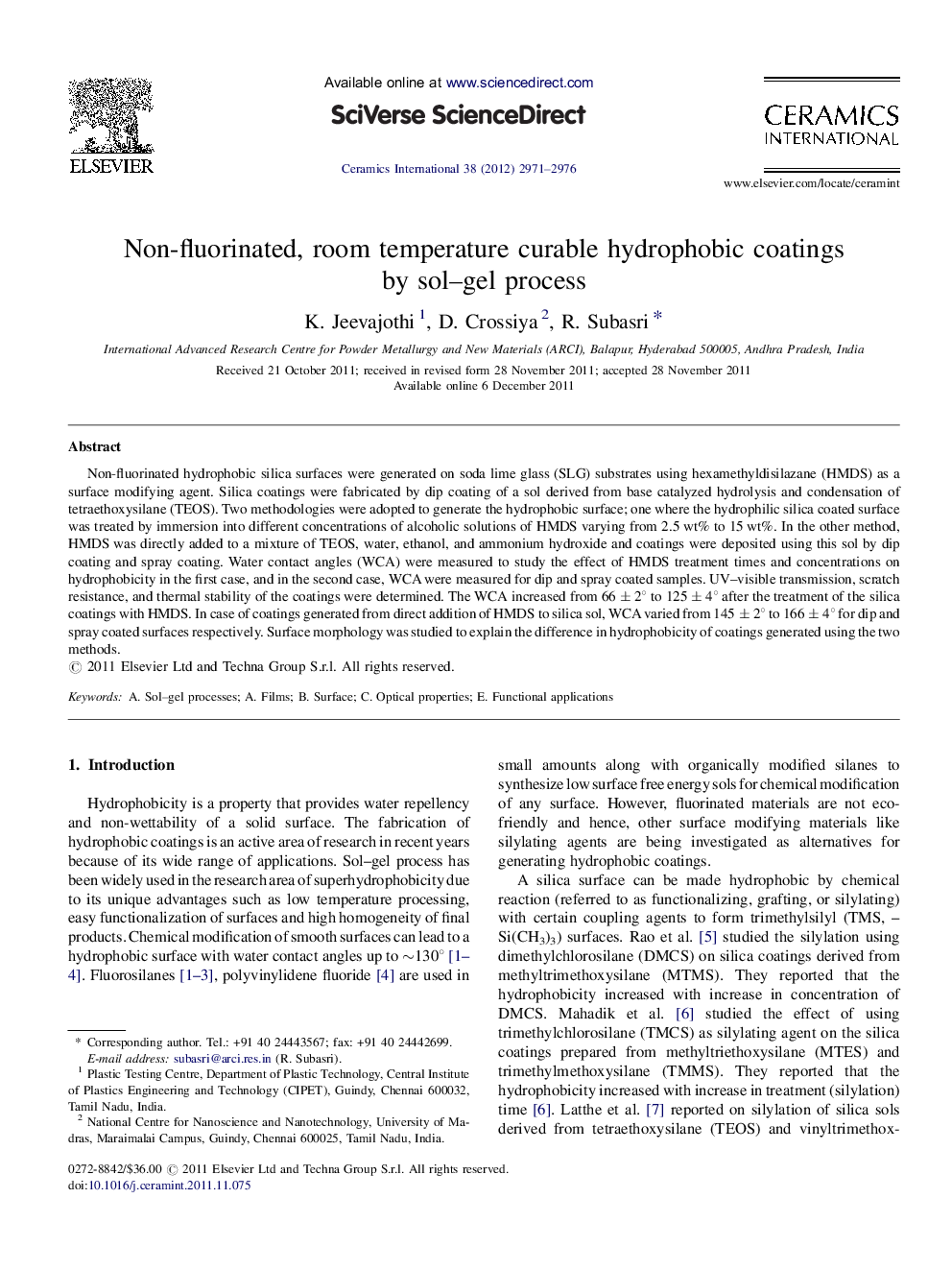| Article ID | Journal | Published Year | Pages | File Type |
|---|---|---|---|---|
| 1463577 | Ceramics International | 2012 | 6 Pages |
Non-fluorinated hydrophobic silica surfaces were generated on soda lime glass (SLG) substrates using hexamethyldisilazane (HMDS) as a surface modifying agent. Silica coatings were fabricated by dip coating of a sol derived from base catalyzed hydrolysis and condensation of tetraethoxysilane (TEOS). Two methodologies were adopted to generate the hydrophobic surface; one where the hydrophilic silica coated surface was treated by immersion into different concentrations of alcoholic solutions of HMDS varying from 2.5 wt% to 15 wt%. In the other method, HMDS was directly added to a mixture of TEOS, water, ethanol, and ammonium hydroxide and coatings were deposited using this sol by dip coating and spray coating. Water contact angles (WCA) were measured to study the effect of HMDS treatment times and concentrations on hydrophobicity in the first case, and in the second case, WCA were measured for dip and spray coated samples. UV–visible transmission, scratch resistance, and thermal stability of the coatings were determined. The WCA increased from 66 ± 2° to 125 ± 4° after the treatment of the silica coatings with HMDS. In case of coatings generated from direct addition of HMDS to silica sol, WCA varied from 145 ± 2° to 166 ± 4° for dip and spray coated surfaces respectively. Surface morphology was studied to explain the difference in hydrophobicity of coatings generated using the two methods.
